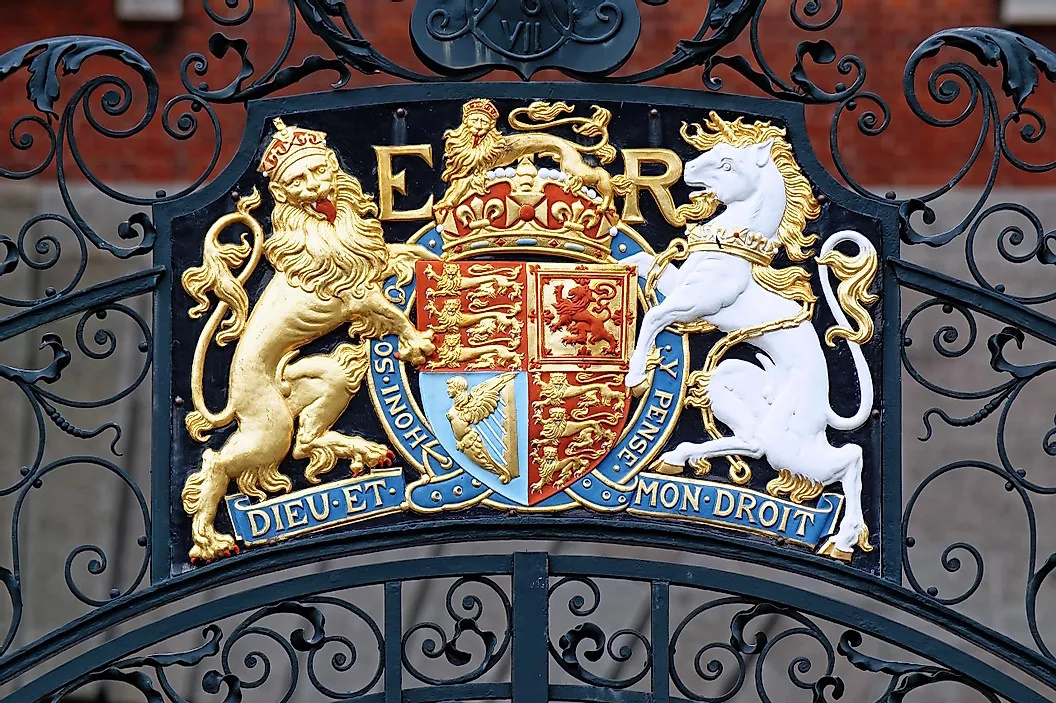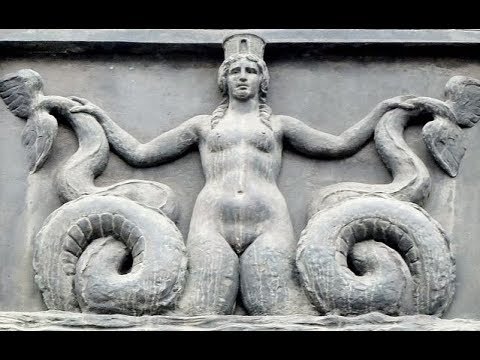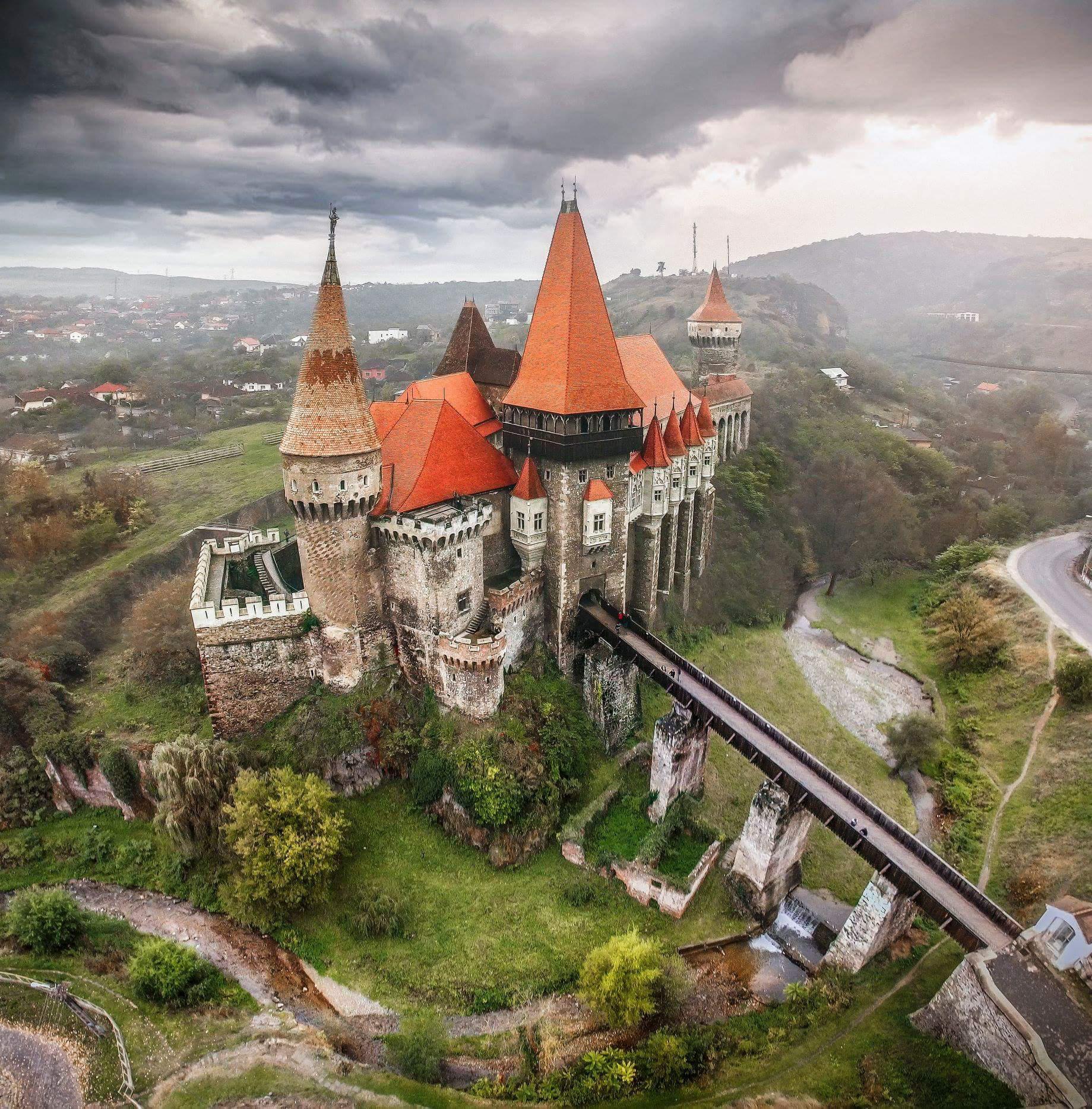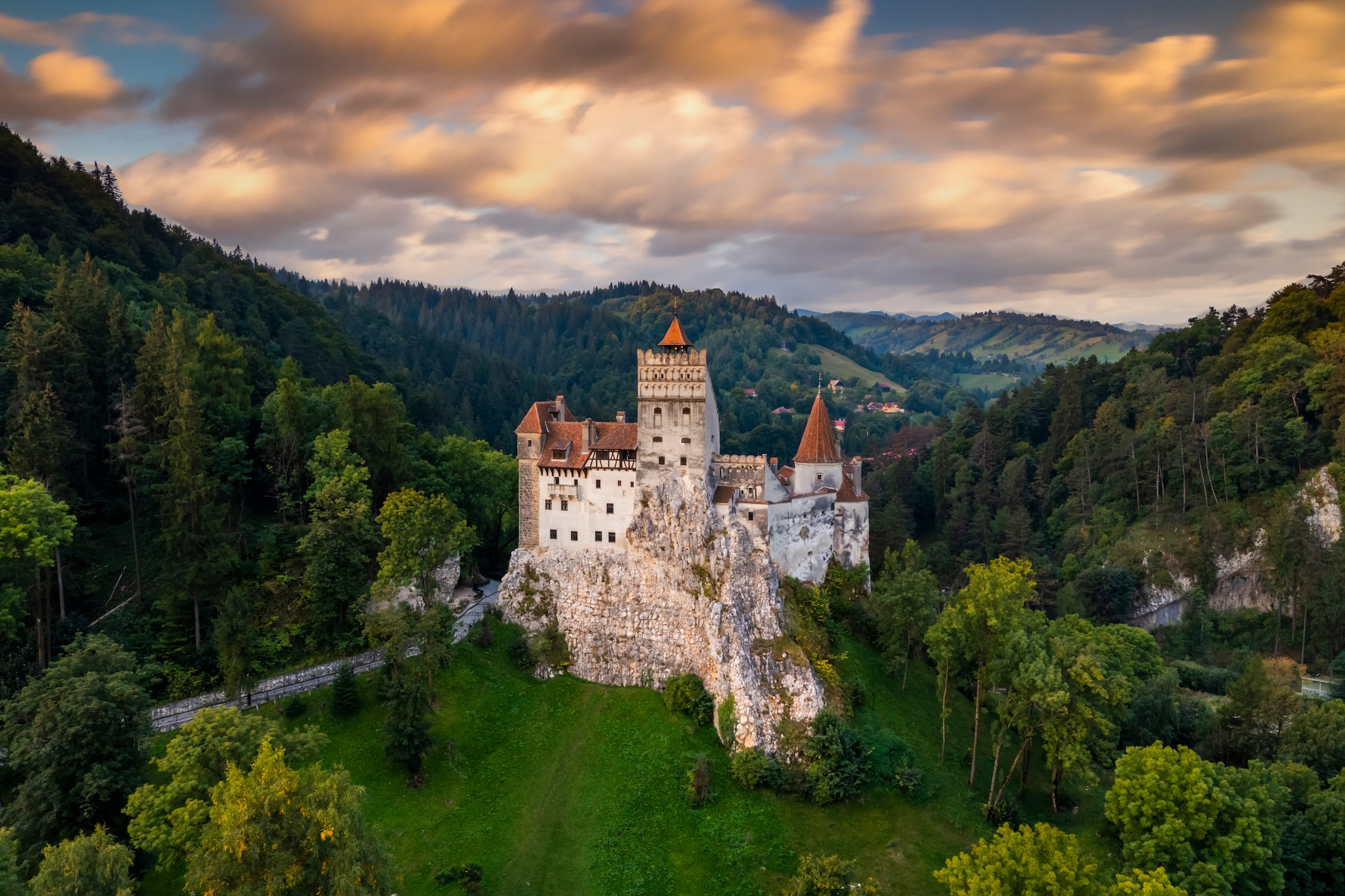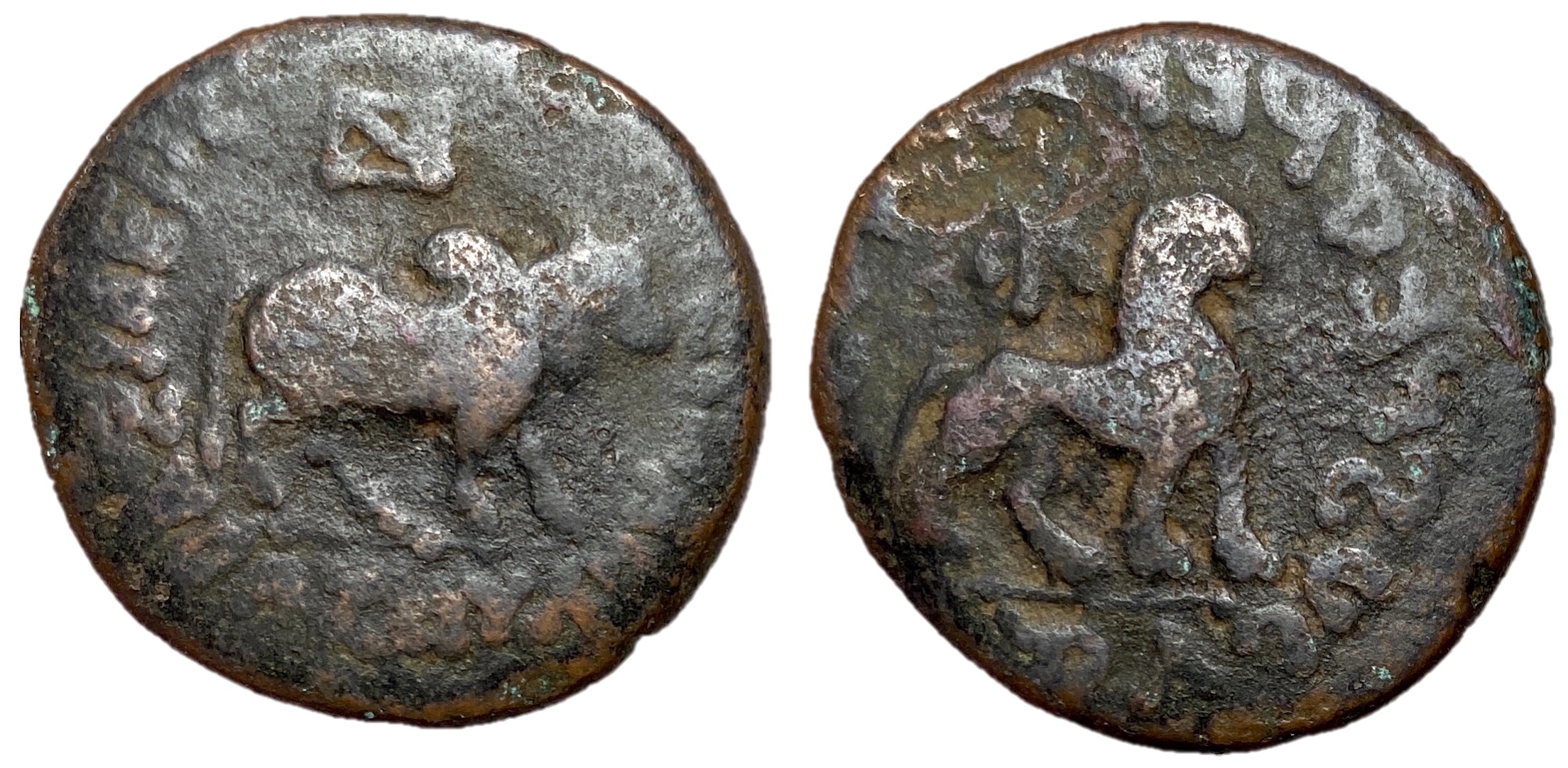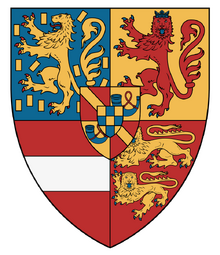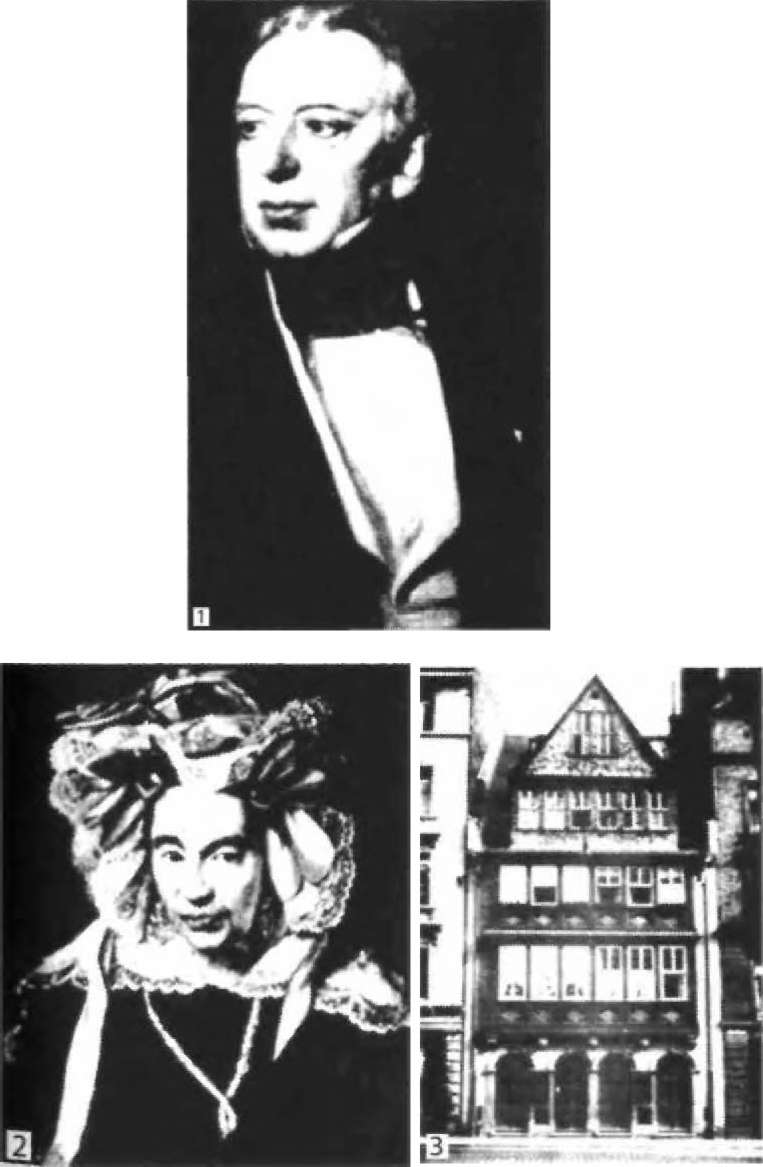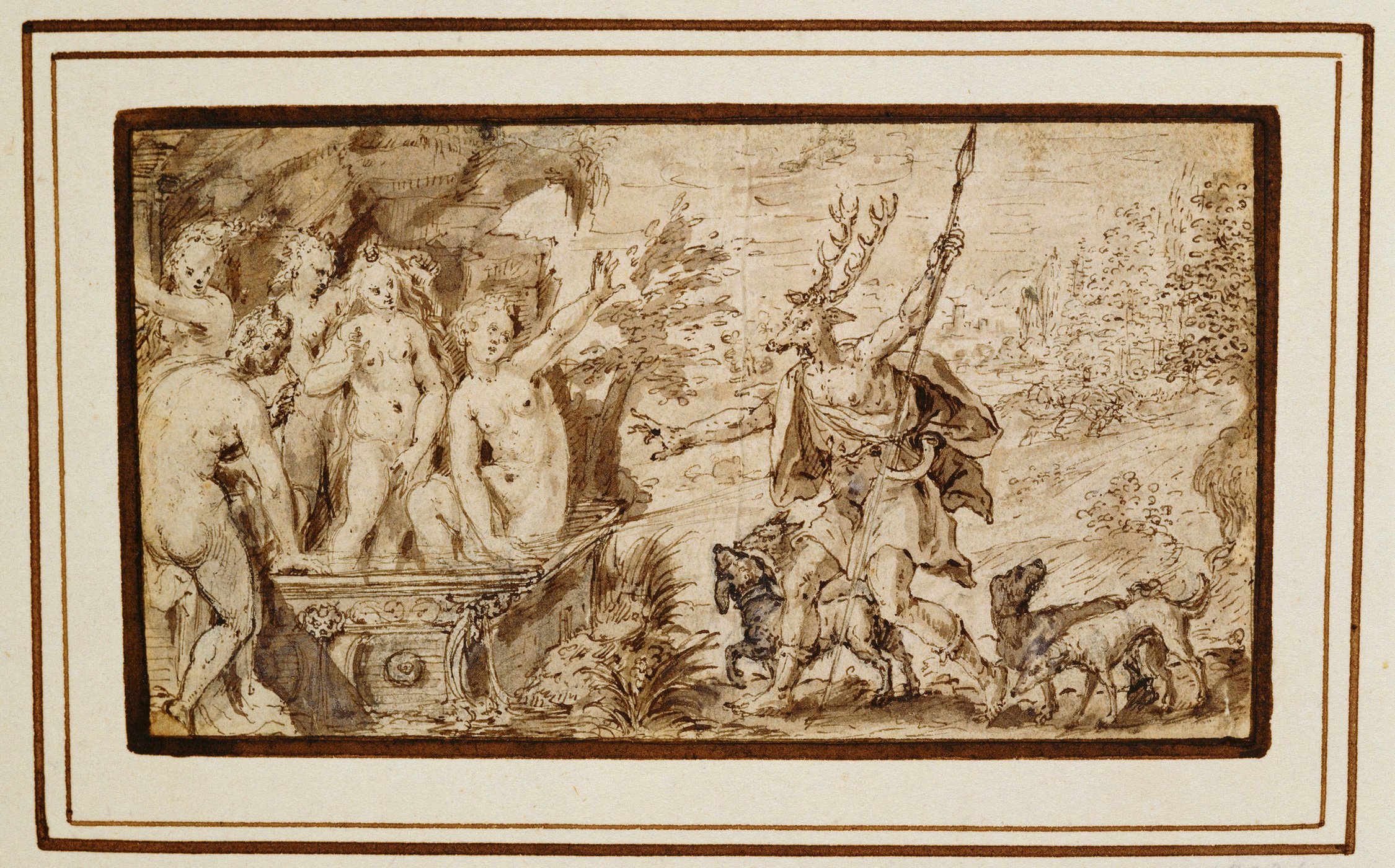
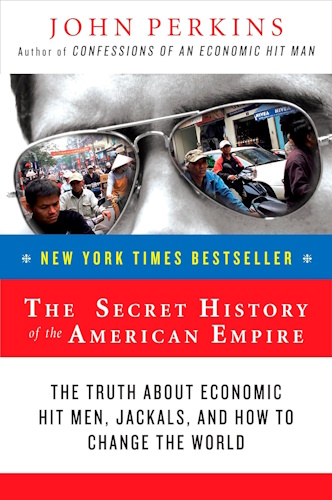

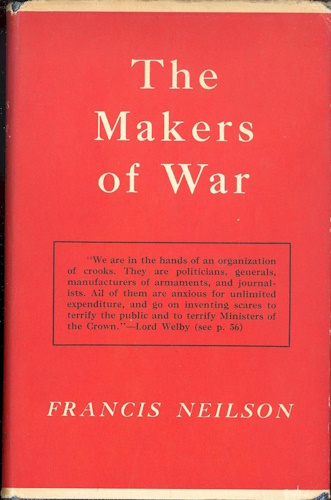

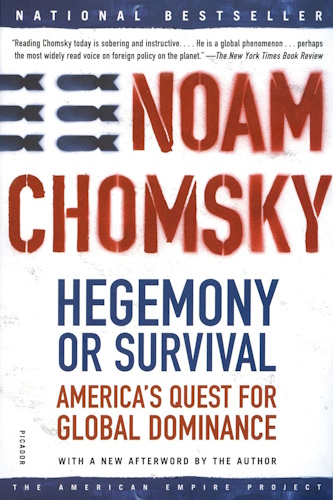



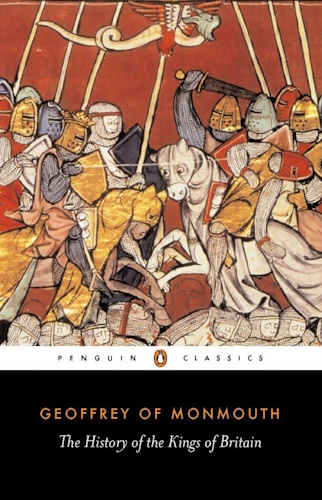

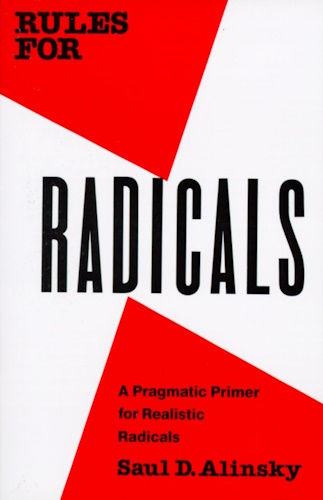

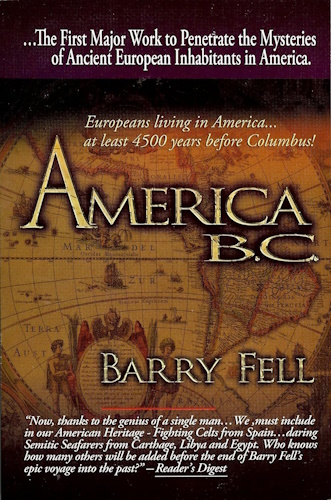

Whence & Pence
A Series
by
Douglas V. Gnazzo
January 6, 2005 - April 18, 2005
(Retrieved from archive.org)
![]()
Part 6: The Hounding
February 25, 2005
INTRO
England was the ruling power of the world up until the late nineteenth century. Their signature footprints are discernible throughout history, across the globe, traversing the land from East to West. Until 1603, the English and Scottish Crowns were separate. From thence on one monarch ruled the United Kingdom. By the end of the Hanoverian Dynasty over one third of the world's territory was under the yoke of the British Empire.
Britain's Empire was nurtured from the roots of mercantilism, but forged in the seething fires of imperialism – the belief that the easiest way to increase and monopolize world trade is to acquire as much foreign land and resources as possible, including, if need be, one's fellow man. The advent of World War I witnessed the beginning dissolution of England's dominant role in world affairs. The newest player to the game – the United States. But who was backing which player or players? And who owned the board and game?
BEFORE ENGLAND
During the Dark Ages there wasn't any well-defined societal or political structure. Most of the inhabitants belonged to tribes and were ruled either by chieftains or kings. Prior to the Romans leaving the area, Emperor Hadrian had built "Hadrian's Wall," which extended for about 73 miles, and separated the "romanized" Britons from the "barbarian Picts." The Anglo-Saxons had to defend themselves against numerous invading peoples: the Picts, the Germans, the Irish, and the Vikings.
In 1066, the Normans, led by William the Conqueror, came to stay, defeating the Saxons at the battle of Hastings. William built Windsor Castle from which four Norman Kings ruled until 1154. Henry II, the son of Geoffrey Plantagenet and Henry I's daughter, Matilda, was the first in a long line of 14 Plantagenet kings from Henry II's accession to Richard III's in 1485.
During the Dark Ages Scotland was populated by five different tribes: the Picts lived to the north of the rivers Forth and Clyde; the Scots inhabited Argyll; the Angles were in Lothian; the ancient Britons had retreated to Strathclyde; and in the ninth century, the invading Norsemen settled in Orkney, Shetland, and the Western Isles.
The various tribes remained separate and independent from one another until the mid-ninth century when the unification of the Picts and Scots took place with Kenneth MacAlpin becoming the King of both the Picts and the Scots. The Scots were the dominant power; however, the Norsemen in the Western Isles were of significant influence as well.
WHO'S WHO
Many famous names are associated with England: from the House of Windsor, to the House of Stuart, to the House of Tudor. The Carolingians preceded these dynasties, and the Merovingians came before. It seems most plausible that the English family with the oldest and longest running line of uninterrupted recorded descent would be a familiar royal name, however, in keeping with the unique unfolding of history we have seen, such is not the case.
The Earls of Oxford do go back a long way, and include some most interesting personages and tales. Discreetly remaining off center stage, the Earls represented a very powerful heritage that stayed behind the scenes, out of sight – out of mind, directing the cast of players as if an unseen hand moved about.
Earls are members of a system of titles of nobility, of a class of Knights that have established a hereditary line of male descent, hence the expression Blue Blood, referring to a bloodline of descent. Some of these bloodlines lay claim to lineage more royal than the royal families themselves, yet they do not claim to be Royalty, at least not at the present moment of time – another of those unexplained paradoxes, or so it is made to seemingly appear.
Charles Martel defeated Rainfroi de Ver, Duke of Anjou, in 719. His son, Peppin III was the father of Charlemagne and Berta. Berta married the son of Rainfroi de Ver, Milo de Ver in 800 AD, the same year her brother was crowned Holy Roman Emperor, another one of those paradoxical coincidences.
Milo was Duke of Anjou and Count of Angleria. The line of descent continued on through a succession of Earls of Genney, until the birth of Alberic de Vere (Aubrey I), followed by Aubrey II and III. Aubrey III was the first Earl of Oxford. It is said that Alberic or Aubrey I, fought at the side of William the Conqueror when he took England at the battle of Hastings, in 1066.
Thomas Weir of Vere of Blackwood was wed to Lady Aegidia, daughter of John, 3rd Lord Somerville, in 1483. Thomas's son, JamesWeir of Vere, 7th Baron of Blackwoodwed Lady Euphemia Hamilton, who was of Merovingian descent, sister of the Duke of Chatelherault, Marquess of Hamilton, 5th Grandson of King Edward III Plantagenet. The Hamiltons were the Heirs Presumptive to the Throne of Scotland during this period.
Plantagenet descent of the House of Vere
Milo I de Vere was Count of Anjou and was the eldest of one Melusine, The Elven Dragon Princess Encyclopedia Mythica: The Story of Melusine. There are definitely some interesting bloodlines mixing and interspersing here.
"Angiers was a Ducal principality in the Comite region of Anjou. In the work of The Rev. Father Sabine Baring-GouldAngiers is referred to as the country where the Scottish, Pictish Princess Melusine eventually became a native after having fled from Avallon. Angiers is now the city of Angers in northern Anjou. As a Ducal principality its rulers constituted a regnant royal house that, in the case of the Vere, were also the Counts of the region in which this city state was situated." [Myths of the Middle Ages].
The Duchy of Angiers
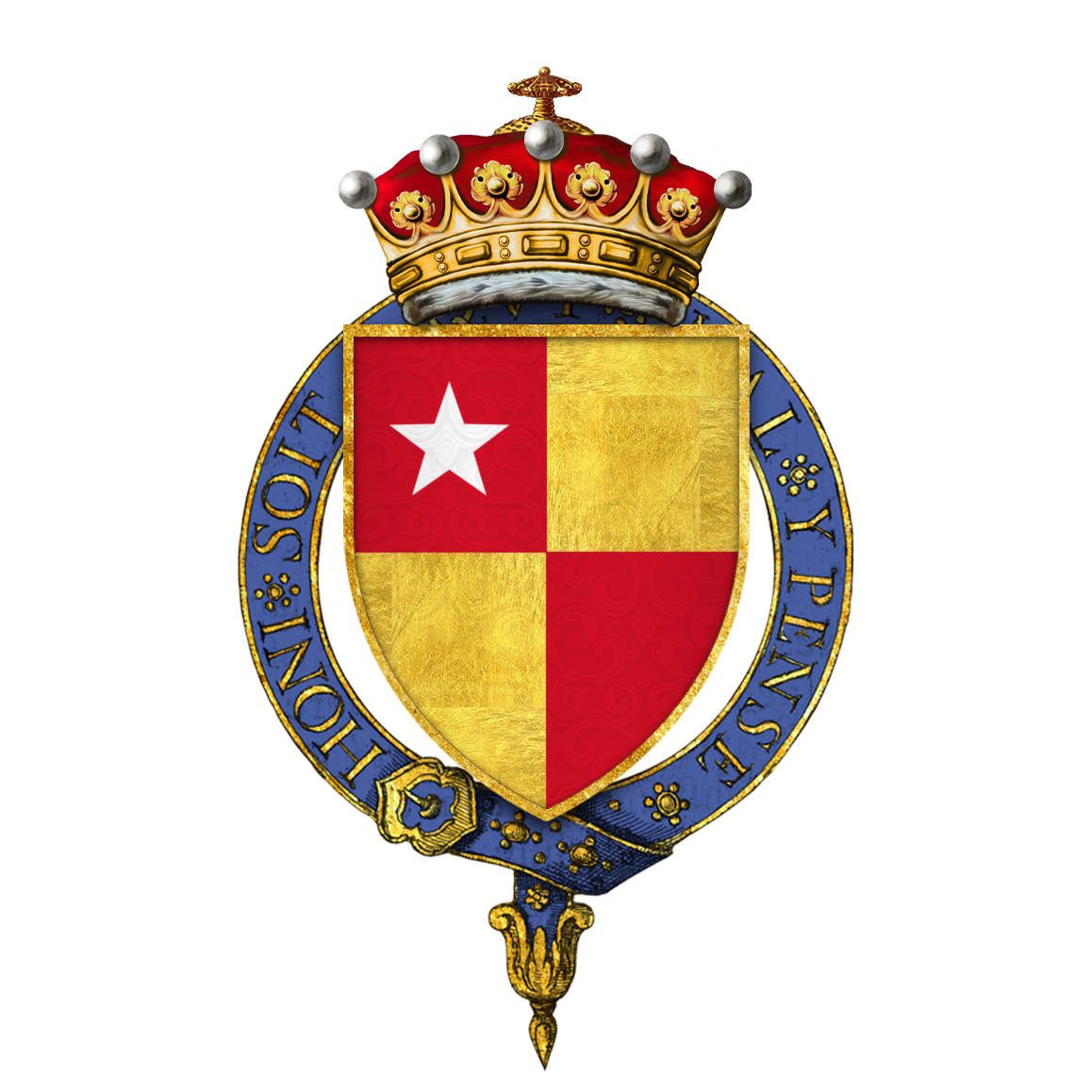
During the investiture ceremony of Emperor Sigismund and Richard de Vere XIth Earl of Oxford, into the Order of the Knights of the Garter at St. George Chapel, Windsor, by King Henry IV; Richard de Vere also received his investiture into the Societas Draconis (@Hanseat - Order of the Dragon: Politikforum - Forum für ...) by Emperor Sigismund.
An illustration of how truth is stranger than fiction, is the following list of membership to the Societas Draconis. In 1388, Voivode Mircea, the Old, father to Vlad Dracul, was married to Princess Maria de Anjou of Tolmay-Luxemburg, who was related to the Emperor Sigismund of Luxemburg.
"The Imperial and Royal Dragon Court is the ancient Household Court and Order of the senior Angevin descendants of the Imperial and Royal House of Vere of Caledonia, Anjou and Lorraine, and the physical embodiment of the sovereign Princedom of Drakenberg, which is recognized under European Law as a sovereign ethnic racial group; the principal nation states of the Draconian peoples:
Furthermore, the royal and ambassadorial nature of the title of the Prince of Drakenberg (Princeps Draconis) is recognized under the 'Official Observations' of the Department of Internal Affairs of the Government of its state of origin within the European Union." [The Imperial and Royal Dragon Court and Order, HRH Prince Nicholas de Vere von Drakenberg]
Notice the above reference to the "royal and ambassadorial" nature of the title of Princeps Draconis. This is from whence the claim to the real Blue Blood comes from, or as some deluded souls believe – Holy Blood. The sentence that includes "recognized under European Law as a sovereign ethnic racial group" is quite enlightening, as it appears "they" have their own race, which is quite distinctive to say the least. Such an elite distinction could be more than most could reasonably bear.
The Anjou family built the castle on older Roman fortifications in 1320.
Sigismund of Luxemburg gave the castle in 1409 to the Corvins as reward for special military service. Iancu de Hunedoara Corvin was the Prince of Transylvanian. Matei Corvin de Hunedoara, Iancu's son, became the King of Transylvania and Hungary. He imprisoned Prince Dracula in the castle for 7 years.
Known as Dracula's Castle
In 1377, the King Ludovic I de Anjou, began construction of Bran Castle, to fortify one of the kingdom's gates, through the Alps, against invasion by the Ottoman Turks.
ORDERS
There are many different types of Orders: Orders of Knights ordained by the Church; Orders of Monks established by the Church; Orders of Knights proclaimed by Royal Families and decrees; and Orders of "societies" or "groups." Some of the Orders are of a very ancient origin going back to Egypt, others back to Scythia; many are open to public scrutiny, while others are secretive and shun the light of day.
Most have heard of the Knights of Columbus or of the Knights of Malta. But what of the Order of the Philadelphs (that's right – as in Philadelphia, Pa. which got its name from ancient Egypt – and old Ben Franklin was a member, which may just cast a whole different pale on the Paris Peace Treaty, and or why some of the Egyptian symbols are on our money and Great Seal); or the Order of the Dragons; or of the Rights of Memphis (as in Memphis Tenn. which is derived from Memphis in Egypt); or the Alta Vendita. Yet all these names and Orders have played important parts in history.
There is a whole lot of goings on – going on, which most of us do not know about, but perhaps we should. Perhaps we should question why such important facts of history are not taught in most schools, including the best College Universities. As Prime Minister Disraeli called them, "secret societies," they do appear to want to remain secret, for sum reason. Perhaps it's because the Jolly Roger might not be so jolly, which may be the reason why the symbol of the Skull & Bones was placed as a warning sign on bottles of poison and hazardous waste.
THE GARTER & THE BEASTS
The Order of the Garter is the oldest of the British Orders of Knighthood and Chivalry, going back to its founding in 1348, by King Edward III. Originally the Order was made up of the King and 25 Knights, one of them being the Prince of Wales or Black Prince. St. George is the patron Saint of the Order, and St. George Cathedral is a special sight to the Order.
It is interesting to note that:
"There are certainly several dozen different animals on the roof, and this paragraph from Britannia helps you appreciate what I look up at every time I visit the chapel:
Adorning the roof of St. George's Chapel are seventy-six stone animals known as the Windsor Royal Beasts. They hold wind vanes and coats of arms, and depict fourteen different heraldic animals associated with the Plantagenet & Tudor Royal families:
[Windsor Royal Beasts on St. George’s Chapel roof]
- The Crowned Golden Lion of England
- The Red Dragon of Wales
- The Silver Falcon of York
- The Black Bull of Clare(nce)
- The Heraldic Panther of Queen Jane Seymour
- The Beaufort Yale of Kendal
- The Mortimer White Lion of March
- The White Greyhound of Richmond
- The Bohun White Swan of Hereford
- The White Hart of Richard II
- The Bohun Collared Silver Antelope
- The Black Dragon of Ulster
- The White Unicorn of Edward III
- The Golden Hind of Kent
The magnificent stone carvings are of intricate detail and design, taking years of skill to complete. Such hard work and dedication gives rise to the question as to whether the Royal Beasts are up there just for decoration, or if there is some kind of meaning behind them. From the various coats of arms and other arcane artifacts we have witnessed so far, it would be safe to say there is meaning behind the symbols – but what meaning?
[I created the folowing table of info-cards to add some visual context to these carvings. Click on the under-dashed name for a brief bio and then click on the picture for 'the bigger' view. If there's an X in the bottom right corner of the picture, click it for 'the biggest' view. ~GBA]
Also of note is that there are still Orders of Knights running about, with the Queen Mom heading them all. Wonder if Queen Beatrice of the Netherlands, of the House of Orange-Nassau, belongs to any Orders, or perhaps the Club of Rome is more than one can bare – its members are said to be quite intense and high strung, overachievers some would call – those that strive to rule the world. And what is one to make of the Skull & Bones Club at Yale? Rumor has it that some mighty powerful world leaders have belonged to the fraternity of Bonesmen. Lord Sidon will be saved for another time.
THE BILDERBERGS
The Bilderdbergs are a group of elite world power brokers, their force and strength deceptively deadly, as they appear open to public scrutiny, when in fact they are very secretive; all matters discussed are not shared with the news media or the public. The Council On Foreign Relations has a similar non-attribution rule – a euphemism for secrecy.
The roster of known members reads like a who's who of the would be rulers of the universe, not only in government, but also in finance, communications and media, academia, the military, and international business – a supra-governmental group that answers to no known organization that was elected by We The People of the world. As a matter of fact, all members are from Europe, North America, and the United States; all other parts of the globe are excluded.
Bilderberg takes its name from the Bilderberg Hotel in Oosterbeek, Holland, where the first meeting took place in May 1954. Why Holland? Perhaps it is because Prince Bernhard of the Netherlands, of the House of Orange Nassau, originally started the group, although the idea was Joseph H. Retinger's. The group is composed of the most powerful people in all aspects of life and is said to be capable of steering the course of world affairs.
Lions, lions – everywhere.
FROM WHENCE DID THEY COME
From whence did the idea of such an elite group of world leaders emerge? Perhaps from similar groups before? Perhaps there have always been such groups? As Professor Quigley states in his landmark book Tragedy and Hope:
"Rothschild interests came to dominate many of the railroads of Europe, while Morgan dominated at least 26,000 miles of American railroads. Such bankers went further than this. In return for flotation of securities of industry, they took seats on the boards of directors of industrial firms, as they had already done on commercial banks, savings banks, insurance firms, and finance companies." (p. 60)
"These firm were controlled through interlocking directorships, holding companies and lesser banks. They engineered amalgamations and generally reduced competition, until by the early twentieth century many activities were so monopolized that they could raise their noncompetitive price above costs." (p. 61)
"As early as 1909, Walther Rathenau, who was in a position to know (since he had inherited from his father control of the German General Electric Company, and held scores of directorships himself), said, 'Three hundred men, all of whom know one another, direct the economic destiny of Europe, and choose their successors from among themselves.'" (p. 61)
"On this basis, which was originally financial and goes back to George Peabody, there grew up in the twentieth century a power structure between London and New York which penetrated deeply into university life, the press, and the practice of foreign policy. In England the center was the Round Table Group, while in the United States it was J.P. Morgan and Company or its local branches in Boston, Philadelphia, and Cleveland." (p. 953)
"No country that values its safety should allow what the Milner group accomplished-- that is, that a small number of men would be able to wield such power in administration and politics, should be able to exercise such influence over the avenues of information that create public opinion, and should be able to monopolize so completely the writing and the teaching of the history of their own period." [Quigley - The Anglo-American Establishment]
Cecil Rhodes created the Round Table at the behest of Lord Rothschild. Upon Rhodes death, Rothschild was trustee of a huge fortune that Rhodes left to fund "his group," which he had made in Africa in the trade of slaves, diamonds, gold, and the building of railroads.
After his appointment by Rothschild, Milner recruited a group from Oxford and Tonybee Hall to assist him in organizing the new society. All were English Freemasons; including: Rudyard Kipling, Arthur Balfour, Lord Rothschild, and some Oxford College graduates known as Milner's Kindergarten.
As a limb or Plant-ard branches off from the main stem, so too did the Round Table split off; the main appendages being: the Royal Institute of International Affairs, organized in 1919 in London; the Council on Foreign Relations, organized in 1921; the Institute of Pacific Relations, organized in 1925; the Bilderberg Group, 1954; the Club of Rome, 1968; and the Trilateral Commission, 1973. A most prolific seedling.
CONNECTING THE DOTS
In Whence & Pence, Part 2: The Confounding reference was made to the wording of the Virginia Constitution from which much of the United States Declaration of Independence and the Bill of Rights came from.
"Whereas George the third, King of Great Britain and Ireland, and elector of Hanover, heretofore intrusted with the exercise of the kingly office in this government, hath endeavoured to prevent, the same into a detestable and insupportable tyranny, by putting his negative on laws the most wholesome and necessary for the public good:"
"By transporting, at this time, a large army of foreign mercenaries, to complete the works of death, desolation, and tyranny, already begun with circumstances of cruelty and perfidy unworthy the head of a civilized nation:"
The two sections of particular interest are: foreign mercenaries and elector of Hanover.
MERCENARIES
Very little has ever been said about the mercenaries that fought for England in the Revolutionary War against the United States. They are occasionally mentioned, but seldom, if ever, named or discussed in any detail.
Hesse-Kassel was a German principality that came into existence when the Landgraviate of Hesse was divided in 1568. In 1785, the Landgrave Frederick II of Hesse-Cassel died, and his son Prince William became the new Landgrave. William was from the royal family of Hesse, and was known to be a Freemason. His younger brother Karl was said to be the head of all German Freemasons.
The Hesse-Cassel's were one of the wealthiest houses in Europe. Their main source of income came from the "renting" of Hessian soldiers as mercenaries to fight for foreign countries. The Landgrave Frederick II loaned out 20,000 Hessian troops to his nephew King George III of England, to fight in the American Revolution, assisting in the war against the North American colonies – the pence, a mere £3,191,000. The colonial troops actually fought more Hessian soldiers than English. These are the "mercenaries" mentioned in the Virginia Constitution.
When William inherited his father's crown, he was also named as an Imperial Elector, and he took the title Wilhelm I, Elector of Hesse. Electors were members of the electoral college of the Holy Roman Empire – their job was to elect Emporers, a priveledged and powerful position. King George III of England was also the Duke of Brunswick-Lüneburg, and thus Elector of Hanover. George was descended from the House of Hanover, hence the reference to the elector of Hanover in the Virginia Constitution.
WHENCE THE ROTHSCHILD PENCE
The House of Hanover was a royal dynasty of Germany which ruled both Britain and Germany. The Hanoverians succeeded the House of Stuart as kings of Great Britain in 1714. The House of Hanover was descended from Henry the Lion. In 1803 Hesse-Kassel became an electorate, and in 1807 it was the capital of the kingdom of Westphalia.
Mayer Amschel Bauer (Rothschild) first went to work for the Oppenheimers, as a clerk in a bank owned by them in Hannover. While working at the bank, Mayer meet a man by the name of General von Estorff, who was under service to none other than Prince William. Amschel was very knowledgeable in rare coins, and he procured some for the general and other members of William's court at very discounted prices. This ingratiated him with the general, who soon introduced him to Prince William. Shortly thereafter, Rothschild became the banker for the House of Hesse-Kassel – the year, 1769. The war had begun, the first warning shot fired across the bow of the world.
ADAM WEISHAUPT
Adam Weishaupt was born in 1748, in Ingolstadt, a city in (Bavaria) Germany, which at the time was an independent kingdom. Adam was a very good student in school and had a natural talent and interest in learning. He attended a "high school" run by the Jesuits, who were very impressed with his studies and had big "plans" for him. Adam had a mind of his own, however, and left the Jesuits to become a professor of canon law at the University of Ingolstadt. Weishaupt had a penchant for the occult and arcane, and read everything he could get his hands on.
Coupled with his fervent intensity in the occult, as well as his own personal experiences during his earlier life and upbringing, Weishaupt developed an almost psychopathic lifestyle focused on organizing a secret society to save or transform the world. The first name he chose for his society was Perfectibilisen, somewhat of a take off from the Cathars, which means the "perfect ones."
As his group of followers grew, he organized the society along "standard" Freemason designs, leaning towards the hierarchical structure of the Sufis of Islam. Such structure includes different degrees of "illuminati," with the pinnacle being the Illuminatus Rex or King. Hence the group came to be called "the Illuminati." Of interest to note – above we have seen that Prince William's younger brother, Karl, was the head of the German Freemasons, and literature is ripe with stories of secret meetings and ceremonies taking place in the Royal Castle and other court properties. Included in these secret meetings at the Royal Castle was none other than Mayer Rothschild. The "Illuminati" spread like wildfire, from Germany to France, to Spain, Portugal, England, and even to the United States.
Weishaupt and the Illuminati had five main goals by which to obtain their vision of Novus Ordo Seclorum: (which inscription somehow found its way onto the back of our dollar bill)
Abolition of all religion
Abolition of patriotism and nationalism
Abolition of private property and inheritances
Abolition of monarchies and all ordered governments
Abolition of family life and the institution of marriage, and the establishment of communal education of children
Many accusations have been made against both Weishaupt and the Illuminati. It is not the purpose of this paper to make any such remarks, only to connect the many "dots" throughout history that appear to be unconnected. History is more than capable of speaking for itself when honestly told, and the reader is more than capable for discerning what to believe or not to believe. In this vain we will end the discussion of Adam Weishaupt with a quote he himself made:
"Sin is only that which is hurtful, and if the profit is greater than the damage,
it becomes a virtue."
ACTAEON'S DOGS
Actaeon was a hunter who had been trained by the Centaur Chiron. One day while out hunting Actaeon stumbled upon the secret cave of Artemis – Mistress of the Wilds, the Goddess of Hunters and the Chase. The Goddess was disrobing and about to bathe in the waters of the spring Parthenius, in the vale of Gargaphia. Upon seeing Actaeon, Artemis took up the water and flung it into his face saying:
"Now you are free to tell that you have seen me all unrobed – if you can tell."
As soon as Artemis had uttered the words, Actaeon began to take on the form of a stag. Once the transformation was complete, Artemis then put fear into his heart, causing Actaeon to run away in fright for his life.
Actaeon's pack of hunting dogs hounded him all around Mount Cithaeron, until they finally caught him, burying their fangs deep into his body, tearing him to pieces. Actaeon the stag lay dead – killed by his own hounds he had loved so dearly, and hunted with all his life.
Actaeon, having surprised Artemis and her train of nymphs in the bath, is turned into a stag.
"Are you proposing to stand up to me?
I know your bow and arrows,
and what lioness you are to women,
whom Zeus allows you to destroy at your discretion;
but if you match yourself with me you will regret it.
You would find it better sport to slaughter wild deer in the mountains
than to fight your superiors."
[Hera to Artemis. Homer, Iliad21.470]
Artemis fled away in tears, as she was no match for Hera.
Part VII will be forthcoming.
![]()
© 2005 Douglas V. Gnazzo
![]()
![]()
![]()
Disclaimer:
Some material presented will contain links, quotes, ideologies, etc., the contents of which should be understood to first, in their whole, reflect the views or opinions of their editors, and second, are used in my personal research as "fair use" sources only, and not espousement one way or the other. Researching for 'truth' leads one all over the place...a piece here, a piece there. As a researcher, I hunt, gather and disassemble resources, trying to put all the pieces into a coherent and logical whole. I encourage you to do the same. And please remember, these pages are only my effort to collect all the pieces I can find and see if they properly fit into the 'reality aggregate'.
Personal Position:
I've come to realize that 'truth' boils down to what we 'believe' the facts we've gathered point to. We only 'know' what we've 'experienced' firsthand. Everything else - what we read, what we watch, what we hear - is what someone else's gathered facts point to and 'they' 'believe' is 'truth', so that 'truth' seems to change in direct proportion to newly gathered facts divided by applied plausibility. Though I believe there is 'truth', until someone representing the celestial realm visibly appears and presents the heavenly records of Facts And Lies In The Order They Happened, I can't know for sure exactly what "the whole truth' on any given subject is, and what applies to me applies to everyone. Until then I'll continue to ask, "what does The Urantia Book say on the subject?"
~Gail Bird Allen
![]()
![]()














-
Urantia Book, 44:0.11 - The Celestial Artisans
Never in your long ascendancy will you lose the power to recognize your associates of former existences. Always, as you ascend inward in the scale of life, will you retain the ability to recognize and fraternize with the fellow beings of your previous and lower levels of experience. Each new translation or resurrection will add one more group of spirit beings to your vision range without in the least depriving you of the ability to recognize your friends and fellows of former estates.
-
Princess Bride 1987 Wallace Shawn (Vizzini) and Mandy Patinkin (Inigo Montoya)
Vizzini: HE DIDN'T FALL? INCONCEIVABLE.
Inigo Montoya: You keep using that word. I do not think it means what you think it means. -
Urantia Book, 117:4.14 - The Finite God
And here is mystery: The more closely man approaches God through love, the greater the reality -- actuality -- of that man. The more man withdraws from God, the more nearly he approaches nonreality -- cessation of existence. When man consecrates his will to the doing of the Father's will, when man gives God all that he has, then does God make that man more than he is.
-
Urantia Book, 167:7.4 - The Talk About Angels
"And do you not remember that I said to you once before that, if you had your spiritual eyes anointed, you would then see the heavens opened and behold the angels of God ascending and descending? It is by the ministry of the angels that one world may be kept in touch with other worlds, for have I not repeatedly told you that I have other sheep not of this fold?"
-
Urantia Book, Foreword - 0:12.12 - The Trinities
But we know that there dwells within the human mind a fragment of God, and that there sojourns with the human soul the Spirit of Truth; and we further know that these spirit forces conspire to enable material man to grasp the reality of spiritual values and to comprehend the philosophy of universe meanings. But even more certainly we know that these spirits of the Divine Presence are able to assist man in the spiritual appropriation of all truth contributory to the enhancement of the ever-progressing reality of personal religious experience—God-consciousness.
-
Urantia Book, 1:4.3 - The Mystery Of God
When you are through down here, when your course has been run in temporary form on earth, when your trial trip in the flesh is finished, when the dust that composes the mortal tabernacle "returns to the earth whence it came"; then, it is revealed, the indwelling "Spirit shall return to God who gave it." There sojourns within each moral being of this planet a fragment of God, a part and parcel of divinity. It is not yet yours by right of possession, but it is designedly intended to be one with you if you survive the mortal existence.
-
Urantia Book, 1:4.1 - The Mystery Of God
And the greatest of all the unfathomable mysteries of God is the phenomenon of the divine indwelling of mortal minds. The manner in which the Universal Father sojourns with the creatures of time is the most profound of all universe mysteries; the divine presence in the mind of man is the mystery of mysteries.
-
Urantia Book, 1:4.6 - The Mystery Of God
To every spirit being and to every mortal creature in every sphere and on every world of the universe of universes, the Universal Father reveals all of his gracious and divine self that can be discerned or comprehended by such spirit beings and by such mortal creatures. God is no respecter of persons, either spiritual or material. The divine presence which any child of the universe enjoys at any given moment is limited only by the capacity of such a creature to receive and to discern the spirit actualities of the supermaterial world.
-
Urantia Book, 11:0.1 - The Eternal Isle Of Paradise
Paradise is the eternal center of the universe of universes and the abiding place of the Universal Father, the Eternal Son, the Infinite Spirit, and their divine co-ordinates and associates. This central Isle is the most gigantic organized body of cosmic reality in all the master universe. Paradise is a material sphere as well as a spiritual abode. All of the intelligent creation of the Universal Father is domiciled on material abodes; hence must the absolute controlling center also be material, literal. And again it should be reiterated that spirit things and spiritual beings are real.
-
Urantia Book, 50:6.4 - Planetary Culture
Culture presupposes quality of mind; culture cannot be enhanced unless mind is elevated. Superior intellect will seek a noble culture and find some way to attain such a goal. Inferior minds will spurn the highest culture even when presented to them ready-made.
-
Urantia Book, 54:1.6 - True And False Liberty
True liberty is the associate of genuine self-respect; false liberty is the consort of self-admiration. True liberty is the fruit of self-control; false liberty, the assumption of self-assertion. Self-control leads to altruistic service; self-admiration tends towards the exploitation of others for the selfish aggrandizement of such a mistaken individual as is willing to sacrifice righteous attainment for the sake of possessing unjust power over his fellow beings.
-
Urantia Book, 54:1.9 - True And False Liberty
How dare the self-willed creature encroach upon the rights of his fellows in the name of personal liberty when the Supreme Rulers of the universe stand back in merciful respect for these prerogatives of will and potentials of personality! No being, in the exercise of his supposed personal liberty, has a right to deprive any other being of those privileges of existence conferred by the Creators and duly respected by all their loyal associates, subordinates, and subjects.
-
Urantia Book, 54:1.8 - True And False Liberty
There is no error greater than that species of self-deception which leads intelligent beings to crave the exercise of power over other beings for the purpose of depriving these persons of their natural liberties. The golden rule of human fairness cries out against all such fraud, unfairness, selfishness, and unrighteousness.

